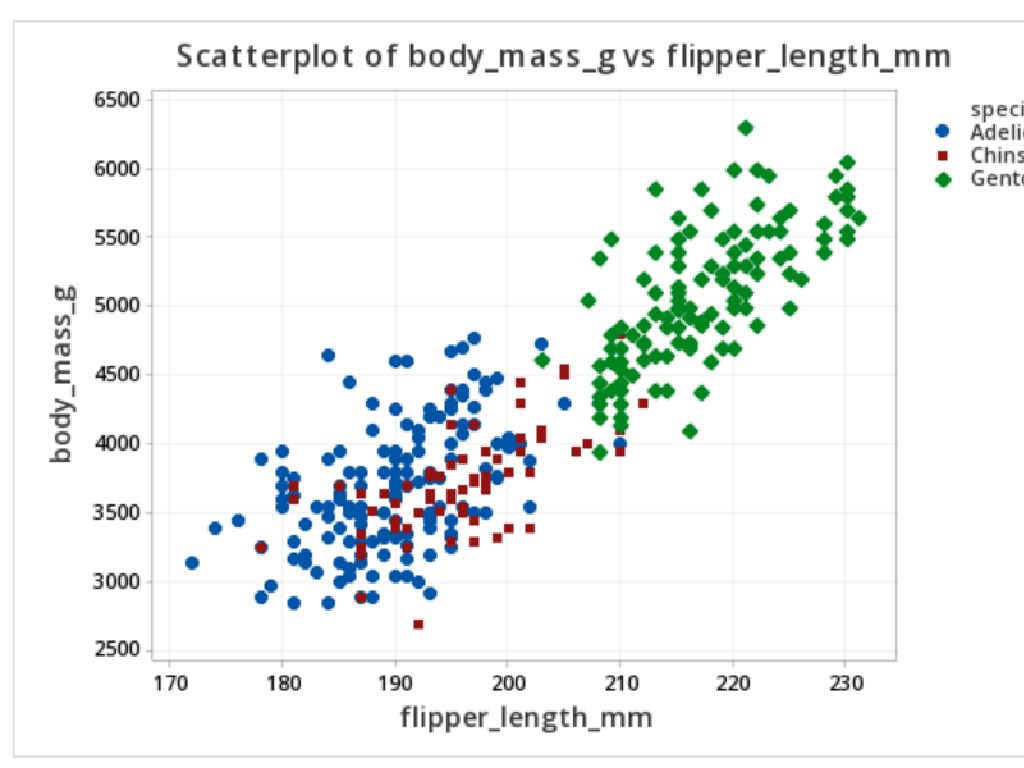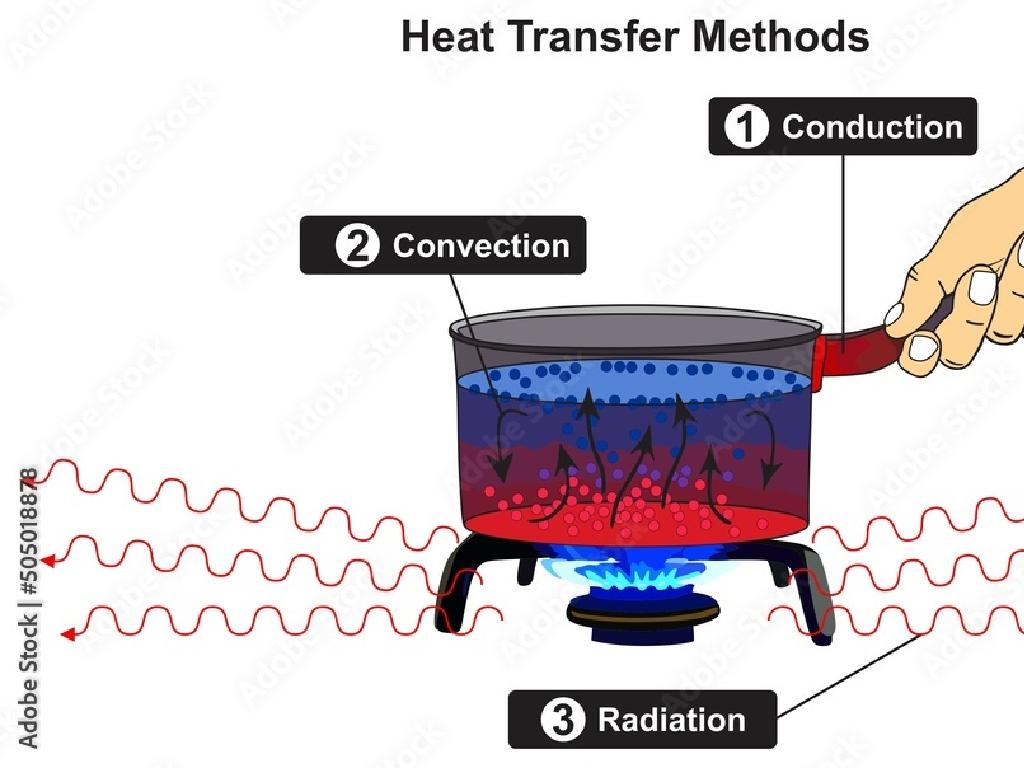Multiply Numbers Written In Scientific Notation
Subject: Math
Grade: Eighth grade
Topic: Scientific Notation
Please LOG IN to download the presentation. Access is available to registered users only.
View More Content
Welcome to Scientific Notation
– Grasping the Power of 10
– Power of 10 simplifies large/small numbers
– Defining Scientific Notation
– A method to express numbers as a product of a coefficient and 10 raised to a power
– Multiplying in Scientific Notation
– Multiply coefficients and add exponents of 10
– Significance of Scientific Notation
– Used for convenience with extremely large or small numbers in science and engineering
|
This slide introduces students to the concept of scientific notation, a critical tool in mathematics and science for dealing with very large or very small numbers. Begin by explaining the Power of 10 and how it can simplify the representation of numbers. Then, define scientific notation as a way to express numbers as the product of a coefficient (a number between 1 and 10) and a power of 10. Illustrate the process of multiplying numbers in scientific notation by multiplying the coefficients and adding the exponents. Emphasize the importance of scientific notation in various fields where it is essential for handling complex calculations with ease. Provide examples and encourage students to practice multiplying numbers in scientific notation to gain confidence in this skill.
Multiplying Numbers in Scientific Notation
– Convert standard form to scientific
– Move decimal to create a number between 1 and 10, then multiply by 10 raised to the number of places moved.
– Convert scientific to standard form
– Shift decimal point right or left according to the exponent of 10.
– Multiplication practice
– Use examples to multiply numbers in scientific notation, e.g., (2 x 10^3) * (3 x 10^4).
– Apply scientific notation rules
– Remember to multiply coefficients and add exponents when multiplying in scientific notation.
|
This slide is a review of scientific notation, crucial for understanding how to multiply numbers in this form. Start by converting numbers from standard form to scientific notation, ensuring students remember to create a coefficient between 1 and 10 followed by a power of 10. Then, reverse the process to convert from scientific notation back to standard form. Provide practice examples for students to apply these conversions and the rules of multiplication, such as multiplying the coefficients and adding the exponents. This will solidify their understanding and prepare them for more complex operations with numbers in scientific notation.
Multiplying Numbers in Scientific Notation
– Rules for multiplication
– Multiply the coefficients
– If 2 x 10^3 multiplies 3 x 10^4, first multiply 2 and 3.
– Add the exponents
– Then add the exponents: 3 (from 10^3) + 4 (from 10^4).
– Example problem
– (2 x 10^3) * (3 x 10^4) = 6 x 10^(3+4) = 6 x 10^7.
|
When teaching multiplication in scientific notation, start by explaining the rules: multiply the coefficients (the numbers before the exponents) and then add the exponents. Use clear examples to demonstrate the process. For instance, multiplying 2 x 10^3 by 3 x 10^4, you multiply 2 by 3 to get 6, and then add the exponents 3 and 4 to get 7, resulting in 6 x 10^7. Emphasize that the base (10) remains the same. Provide practice problems for students to apply these steps, ensuring they understand both the multiplication of coefficients and the addition of exponents. This slide should give students a clear understanding of the process and prepare them for more complex problems.
Multiplying Numbers in Scientific Notation
– Multiply simple coefficients
– Example: (2 x 10^3) * (3 x 10^2) = 6 x 10^5
– Work with larger coefficients
– Example: (4.5 x 10^6) * (2.2 x 10^3) = 9.9 x 10^9
– Handle negative exponents
– Example: (3 x 10^-4) * (5 x 10^-2) = 1.5 x 10^-5
|
This slide provides examples of multiplying numbers in scientific notation, which is a critical skill in understanding and working with very large or very small numbers. Start with simple coefficients to ensure students grasp the concept of multiplying the base numbers and adding exponents. Progress to larger coefficients, emphasizing the importance of precision in multiplication. Finally, introduce negative exponents, which often appear in scientific contexts, to show how the rules of scientific notation apply universally. Encourage students to practice these examples and create similar ones to solidify their understanding.
Group Activity: Multiplying Scientific Notation
– Split into groups for problem-solving
– Solve assigned scientific notation problems
– Use the formula (a × 10^m) × (b × 10^n) = (a × b) × 10^(m+n)
– Present your group’s solutions and methods
– Explain the steps taken to reach the answer
– Engage in a class discussion on approaches
– Compare different methods and learn from each other
|
This class activity is designed to promote collaborative learning and understanding of multiplying numbers in scientific notation. Divide the class into small groups and assign each a different multiplication problem involving scientific notation. After solving the problems, each group will present their solution and the method they used to the class, fostering a deeper understanding through teaching. Conclude with a class discussion to explore various methods used by groups, emphasizing that there may be multiple ways to arrive at the correct answer. This activity encourages peer learning, critical thinking, and reinforces the concept of scientific notation multiplication.
Practice: Multiplying Scientific Notation
– Work on individual problems
– Review answers with a peer
– Exchange papers to check each other’s work
– Discuss challenging problems
– Bring up any tricky problems for group discussion
– Reinforce learning through collaboration
|
This slide is designed to facilitate active learning through practice and peer interaction. Students will begin by solving problems individually to apply the concept of multiplying numbers in scientific notation. Afterward, they will pair up with classmates to review each other’s answers, providing an opportunity for peer learning and immediate feedback. Encourage students to discuss any problems they found difficult, fostering a collaborative learning environment. As a teacher, facilitate the discussion by guiding students through the more challenging problems and clarifying any misconceptions. Prepare 4-5 different sets of problems with varying difficulty levels to cater to different learning paces and ensure that every student remains engaged.
Homework: Practice and Prepare
– Solve multiplication problems
– Multiply numbers as learned today
– Use scientific notation format
– Numbers should be in the form a x 10^n
– Check answers with a calculator
– Ensure accuracy of your solutions
– Next lesson: Division in Scientific Notation
|
This homework assignment is designed to solidify the students’ understanding of multiplying numbers in scientific notation, as covered in today’s lesson. Students should apply the steps learned to solve the problems, ensuring they write their answers in scientific notation. Encourage them to use calculators to check their work for accuracy. Additionally, students should begin preparing for the next class, which will focus on division in scientific notation. Provide a few example problems for division to give them a head start. This practice will help reinforce their skills and build confidence in working with scientific notation.
Multiplying in Scientific Notation: Recap
– Summarize key multiplication steps
– Multiply coefficients, add exponents
– Emphasize the need for practice
– Practice leads to mastery
– Open floor for questions
– Offer extra help
– Available for one-on-one sessions
|
This slide aims to consolidate the students’ understanding of multiplying numbers in scientific notation. Start by summarizing the steps: multiply the coefficients (the numbers in front) and then add the exponents. Remind students that mastering scientific notation requires regular practice, and encourage them to solve different problems to become proficient. Open the floor for any questions to clarify doubts and offer additional help after class or during office hours for those who need it. This will ensure that all students are confident in using scientific notation for multiplication before moving on to more complex topics.





